An Assessment of Fire Refugia Importance Criteria Ranked by Land Managers
Abstract
:1. Introduction
2. Materials and Methods
2.1. Sampling Methodology
2.2. Survey Analysis
3. Results
3.1. Respondent Demographics
3.2. Analysis
4. Discussion
5. Conclusions
Author Contributions
Funding
Acknowledgments
Conflicts of Interest
Appendix A
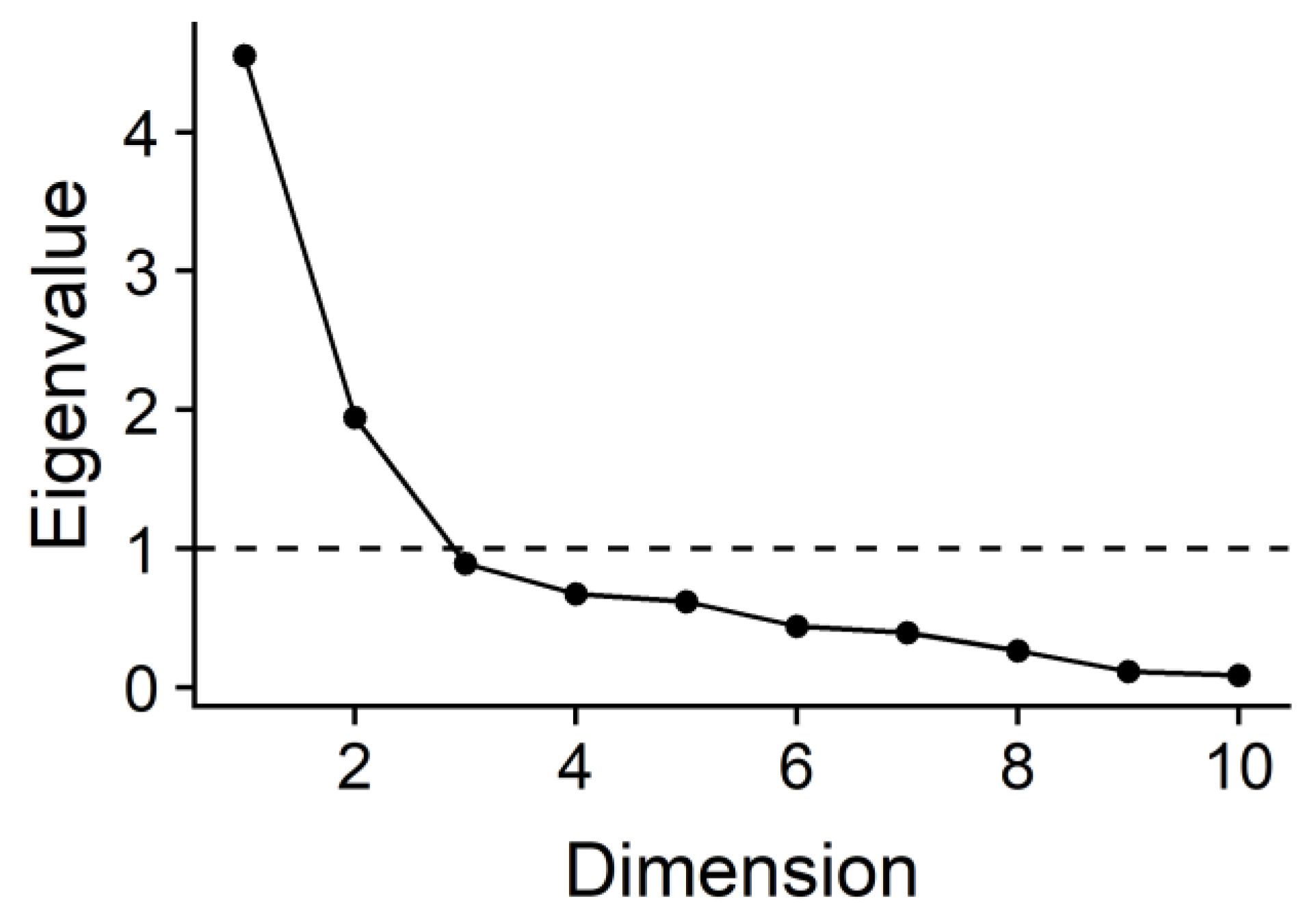
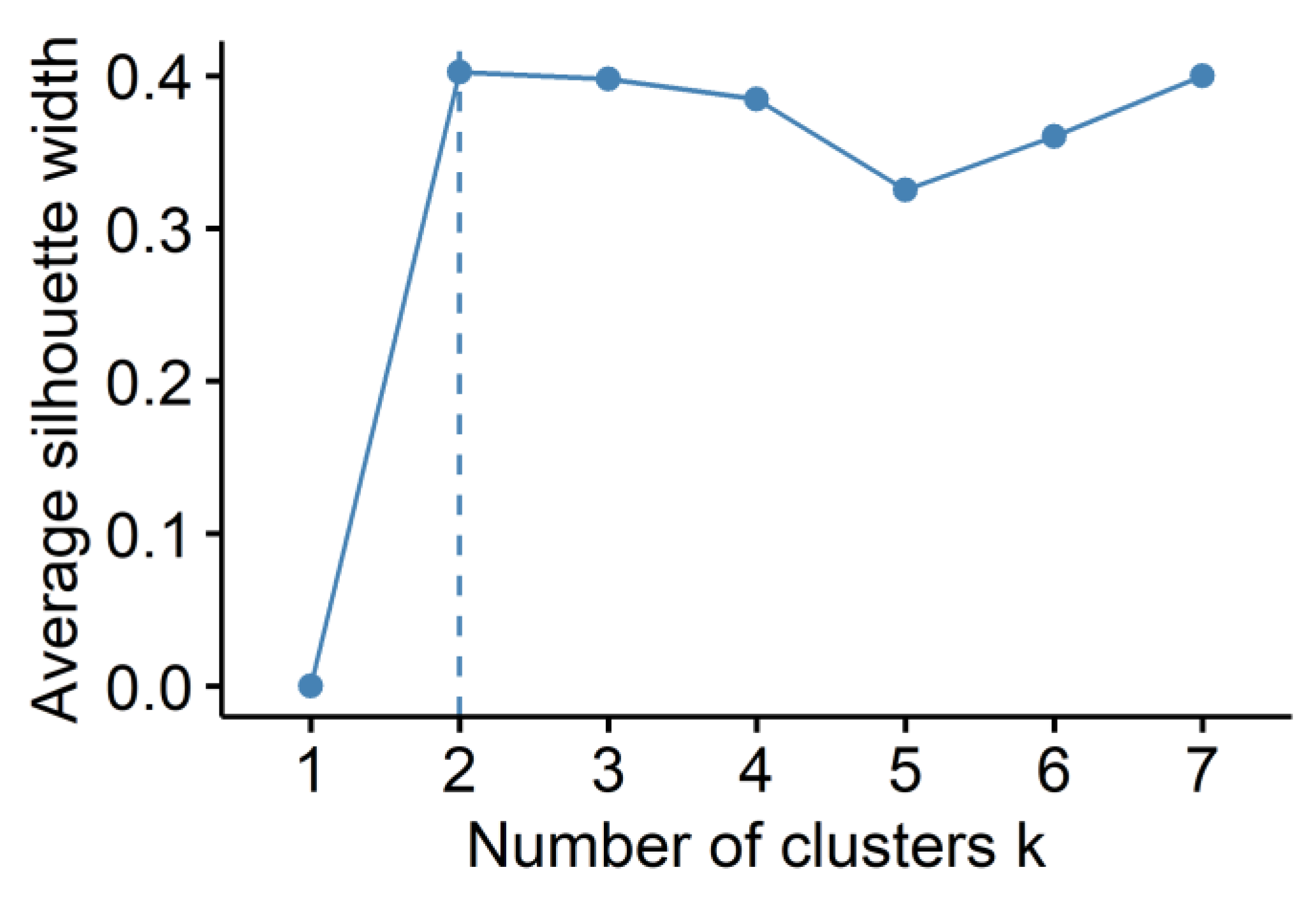
| Criteria | Abbreviation | Factor 1 | Factor 2 |
|---|---|---|---|
| Overall habitat value | Habitat | 0.794 | −0.345 |
| Overall uniqueness | Unique | 0.620 | −0.110 |
| Overall infrastructure | Infrastr | −0.060 | 0.778 |
| Critical habitat | Crit hab | 0.827 | −0.127 |
| Invasive species | Invsv | 0.585 | −0.139 |
| Isolation | Isol | 0.804 | 0.061 |
| Old growth structure | Old growth | 0.817 | 0.112 |
| Unique/rare land cover type | Lnd cvr | 0.561 | −0.081 |
| Presence of buildings | Bldgs | −0.027 | 0.997 |
| Cultural resource | Cult Resc | 0.609 | 0.113 |
References
- NIFC Total Wildland Fires and Acres (1926–2017). Available online: https://www.nifc.gov/fireInfo/fireInfo_stats_totalFires.html (accessed on 4 March 2019).
- Picotte, J.J.; Peterson, B.; Meier, G.; Howard, S.M. 1984–2010 trends in fire burn severity and area for the conterminous US. Int. J. Wildl. Fire 2016, 25, 413. [Google Scholar] [CrossRef]
- Ryan, K.C.; Knapp, E.E.; Varner, J.M. Prescribed fire in North American forests and woodlands: history, current practice, and challenges. Front. Ecol. Environ. 2013, 11, e15–e24. [Google Scholar] [CrossRef]
- Abatzoglou, J.T.; Williams, A.P. Impact of anthropogenic climate change on wildfire across western US forests. Proc. Natl. Acad. Sci. USA 2016, 113, 11770–11775. [Google Scholar] [CrossRef] [PubMed] [Green Version]
- Barbero, R.; Abatzoglou, J.T.; Larkin, N.K.; Kolden, C.A.; Stocks, B. Climate change presents increased potential for very large fires in the contiguous United States. Int. J. Wildl. Fire 2015, 24, 892. [Google Scholar] [CrossRef]
- Peterson, G.; Allen, C.R.; Holling, C.S. Ecological Resilience, Biodiversity, and Scale. Ecosystems 1998, 1, 6–18. [Google Scholar] [CrossRef]
- Stevens-Rumann, C.S.; Kemp, K.B.; Higuera, P.E.; Harvey, B.J.; Rother, M.T.; Donato, D.C.; Morgan, P.; Veblen, T.T. Evidence for declining forest resilience to wildfires under climate change. Ecol. Lett. 2018, 21, 243–252. [Google Scholar] [CrossRef]
- Haugo, R.D.; Kellogg, B.S.; Cansler, C.A.; Kolden, C.A.; Kemp, K.B.; Robertson, J.C.; Metlen, K.L.; Vaillant, N.M.; Restaino, C.M. The missing fire: quantifying human exclusion of wildfire in Pacific Northwest forests, USA. Ecosphere 2019, 10, e02702. [Google Scholar] [CrossRef]
- Kolden, C.A.; Bleeker, T.M.; Smith, A.M.S.; Poulos, H.M.; Camp, A.E. Fire effects on historical wildfire refugia in contemporary wildfires. Forests 2017, 8, 400. [Google Scholar] [CrossRef]
- Meddens, A.J.H.H.; Kolden, C.A.; Lutz, J.A.; Smith, A.M.S.S.; Cansler, C.A.; Abatzoglou, J.T.; Meigs, G.W.; Downing, W.M.; Krawchuk, M.A. Fire Refugia: What Are They, and Why Do They Matter for Global Change? Bioscience 2018, 68, 944–954. [Google Scholar] [CrossRef]
- Keppel, G.; Van Niel, K.P.; Wardell-Johnson, G.W.; Yates, C.J.; Byrne, M.; Mucina, L.; Schut, A.G.T.; Hopper, S.D.; Franklin, S.E. Refugia: Identifying and understanding safe havens for biodiversity under climate change. Glob. Ecol. Biogeogr. 2012, 21, 393–404. [Google Scholar] [CrossRef]
- Mackey, B.; Lindenmayer, D.B.; Gill, M.; McCarthy, M.; Lindesay, J. Wildlife, Fire & Future Climate; CSIRO Publishing: Collingwood, Australia, 2002; ISBN 0 643 06756 6. [Google Scholar]
- Rogeau, M.P.; Barber, Q.E.; Parisien, M.A. Effect of topography on persistent fire refugia of the Canadian Rocky mountains. Forests 2018, 9, 285. [Google Scholar] [CrossRef]
- Robinson, N.M.; Leonard, S.W.J.; Ritchie, E.G.; Bassett, M.; Chia, E.K.; Buckingham, S.; Gibb, H.; Bennett, A.F.; Clarke, M.F. REVIEW: Refuges for fauna in fire-prone landscapes: their ecological function and importance. J. Appl. Ecol. 2013, 50, 1321–1329. [Google Scholar] [CrossRef]
- Krawchuk, M.A.; Haire, S.L.; Coop, J.; Parisien, M.-A.; Whitman, E.; Chong, G.; Miller, C. Topographic and fire weather controls of fire refugia in forested ecosystems of northwestern North America. Ecosphere 2016, 7, e01632. [Google Scholar] [CrossRef]
- Camp, A.; Oliver, C.; Hessburg, P.F.; Everett, R. Predicting late-successional fire refugia pre-dating European settlement in the Wenatchee mountains. For. Ecol. Manag. 1997, 95, 63–77. [Google Scholar] [CrossRef]
- Delong, S.C.; Kessler, W.B. Ecological characteristics of mature forest remnants left by wildfire. For. Ecol. Manag. 2000, 131, 93–106. [Google Scholar] [CrossRef]
- Franklin, J.F.; Lindenmayer, D.B.; MacMahon, J.A.; Mckee, A.; Magnuson, J.; Perry, D.A.; Waide, R.; Foster, D. Threads of continuity. Conserv. Pract. 2000, 1, 8–17. [Google Scholar] [CrossRef]
- Burton, P.J.; Parisien, M.-A.; Hicke, J.A.; Hall, R.J.; Freeburn, J.T. Large fires as agents of ecological diversity in the North American boreal forest. Int. J. Wildl. Fire 2008, 17, 754–767. [Google Scholar] [CrossRef]
- Charron, I.; Greene, D.F. Post-wildfire seedbeds and tree establishment in the southern mixedwood boreal forest. Can. J. For. Res. 2002, 32, 1607–1615. [Google Scholar] [CrossRef]
- Viedma, O.; Meliá, J.; Segarra, D.; García-Haro, J. Modeling rates of ecosystem recovery after fires by using landsat TM data. Remote Sens. Environ. 1997, 61, 383–398. [Google Scholar] [CrossRef]
- Hart, S.C.; DeLuca, T.H.; Newman, G.S.; MacKenzie, M.D.; Boyle, S.I. Post-fire vegetative dynamics as drivers of microbial community structure and function in forest soils. For. Ecol. Manag. 2005, 220, 166–184. [Google Scholar] [CrossRef]
- Lindenmayer, D.B.; Franklin, J.F.; Fischer, J. General management principles and a checklist of strategies to guide forest biodiversity conservation. Biol. Conserv. 2006, 131, 433–445. [Google Scholar] [CrossRef]
- Meddens, A.J.H.; Kolden, C.A.; Lutz, J.A. Detecting unburned areas within wildfire perimeters using Landsat and ancillary data across the northwestern United States. Remote Sens. Environ. 2016, 186, 275–285. [Google Scholar] [CrossRef]
- Meddens, A.J.H.; Kolden, C.A.; Lutz, J.A.; Abatzoglou, J.T.; Hudak, A.T. Spatiotemporal patterns of unburned areas within fire perimeters in the northwestern United States from 1984 to 2014. Ecosphere 2018, 9, e02029. [Google Scholar] [CrossRef]
- Perera, A.H.; Buse, L.J. Ecology of Wildfire Residuals in Boreal Forests; John Wiley & Sons, Ltd.: Chichester, UK, 2014; ISBN 9781118870488. [Google Scholar]
- Endries, M.; Gilbert, T.; Kautz, R. Environmental planning in Florida: Mapping wildlife needs in Florida: The integrated wildlife habitat ranking system. In Proceedings of the 2003 International Conference on Ecology and Transportation, Lake Placid, NY, USA, 24–29 August 2003; Irwin, C.L., Garrett, P., McDermott, K.P., Eds.; Center for Transportation and the Environment, North Carolina State University: Raleigh, NC, USA, 2003; pp. 525–534. [Google Scholar]
- Stauffer, H.B.; Ralph, C.J.; Miller, S.L. Ranking habitat for marbled murrelets: New conservation approach for species with uncertain detection. Ecol. Appl. 2004, 14, 1374–1383. [Google Scholar] [CrossRef]
- Bodin, Ö.; Saura, S. Ranking individual habitat patches as connectivity providers: Integrating network analysis and patch removal experiments. Ecol. Modell. 2010, 221, 2393–2405. [Google Scholar] [CrossRef]
- Carroll, C.; DUunk, J.R.; Moilanen, A. Optimizing resiliency of reserve networks to climate change: multispecies conservation planning in the Pacific Northwest, USA. Glob. Chang. Biol. 2010, 16, 891–904. [Google Scholar] [CrossRef] [Green Version]
- Kiester, A.R.; Scott, J.M.; Csuti, B.; Noss, R.F.; Butterfield, B.; White, D. Conservation Prioritization Using GAP Data. Conserv. Biol. 1996, 10, 1332–1342. [Google Scholar] [CrossRef]
- Battaglia, M.P. Purposive Sample. Encycl. Surv. Res. Methods 2008, 645–647. [Google Scholar]
- Morgan, D.L. Snowball Sampling. SAGE Encycl. Qual. Res. Methods 2008, 816–817. [Google Scholar]
- Fox, N. Nonprobability Sampling. In The SAGE Encyclopedia of Qualitative Research Methods; SAGE Publications, Inc.: Thousand Oaks, CA, USA, 2008; p. 1043. ISBN 9781412941631. [Google Scholar]
- Dillman, D.A.; Smyth, J.D.; Christian, L.M. Internet, Phone, Mail, and Mixed-Mode Surveys: The Tailored Design Method, 4th ed.; John Wiley & Sons, Inc.: Hoboken, NJ, USA, 2014; ISBN 9781118456149. [Google Scholar]
- Abbot, J.; Chambers, R.; Harris, T.; de Merode, E.; Porter, G.; Townsend, J.; Weiner, D. Participatory GIS: oppurtunity or oxymoron? PLA Notes 1998, 27–34. [Google Scholar]
- R Core Team. R: A Language and Environment for Statistical Computing; R Foundation for Statistical Computing: Vienna, Austria, 2018. [Google Scholar]
- Fabrigar, L.R.; Wegener, D.T. Exploratory Factor Analysis; Oxford University Press: New York, NY, USA, 2011; ISBN 9780199734177. [Google Scholar]
- Cattell, R.B. The Scree Test For The Number Of Factors. Multivar. Behav. Res. 1966, 1, 245–276. [Google Scholar] [CrossRef]
- Rousseeuw, P.J. Silhouettes: A graphical aid to the interpretation and validation of cluster analysis. J. Comput. Appl. Math. 1987, 20, 53–65. [Google Scholar] [CrossRef] [Green Version]
- Calkin, D.E.; Cohen, J.D.; Finney, M.A.; Thompson, M.P. How risk management can prevent future wildfire disasters in the wildland-urban interface. Proc. Natl. Acad. Sci. USA 2014, 111, 746–751. [Google Scholar] [CrossRef] [PubMed]
- Ní Dhubháin, Á.; Cobanova, R.; Karppinen, H.; Mizaraite, D.; Ritter, E.; Slee, B.; Wall, S. The Values and Objectives of Private Forest Owners and Their Influence on Forestry Behaviour: The Implications for Entrepreneurship. Small-Scale For. 2007, 6, 347–357. [Google Scholar] [CrossRef]
- Martin, I.M.; Steelman, T.A. Using Multiple Methods to Understand Agency Values and Objectives: Lessons for Public Lands Management. Policy Sci. 2004, 37, 37–69. [Google Scholar] [CrossRef]
- Ray, L.A.; Kolden, C.A.; Chapin, F.S. A case for developing place-based fire management strategies from traditional ecological knowledge. Ecol. Soc. 2012, 17, 37. [Google Scholar] [CrossRef]
- Roux, D.J.; Rogers, K.H.; Biggs, H.C.; Ashton, P.J.; Sergeant, A. Bridging the science-management divide: Moving from unidirectional knowledge transfer to knowledge interfacing and sharing. Ecol. Soc. 2006, 11, 4. [Google Scholar] [CrossRef]
- Ouarmim, S.; Ali, A.A.; Asselin, H.; Hély, C.; Bergeron, Y. Evaluating the persistence of post-fire residual patches in the eastern Canadian boreal mixedwood forest. Boreas 2015, 44, 230–239. [Google Scholar] [CrossRef]
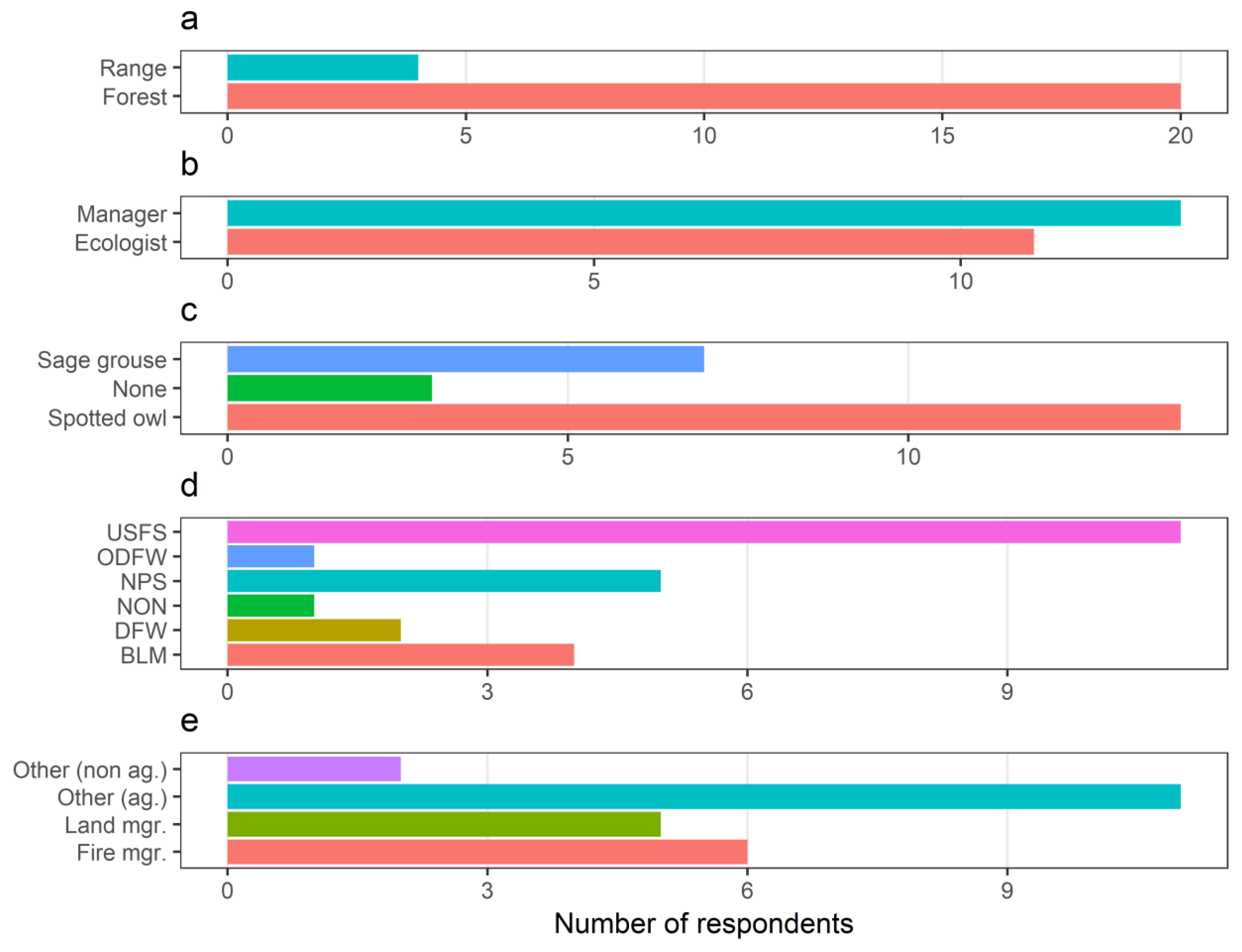
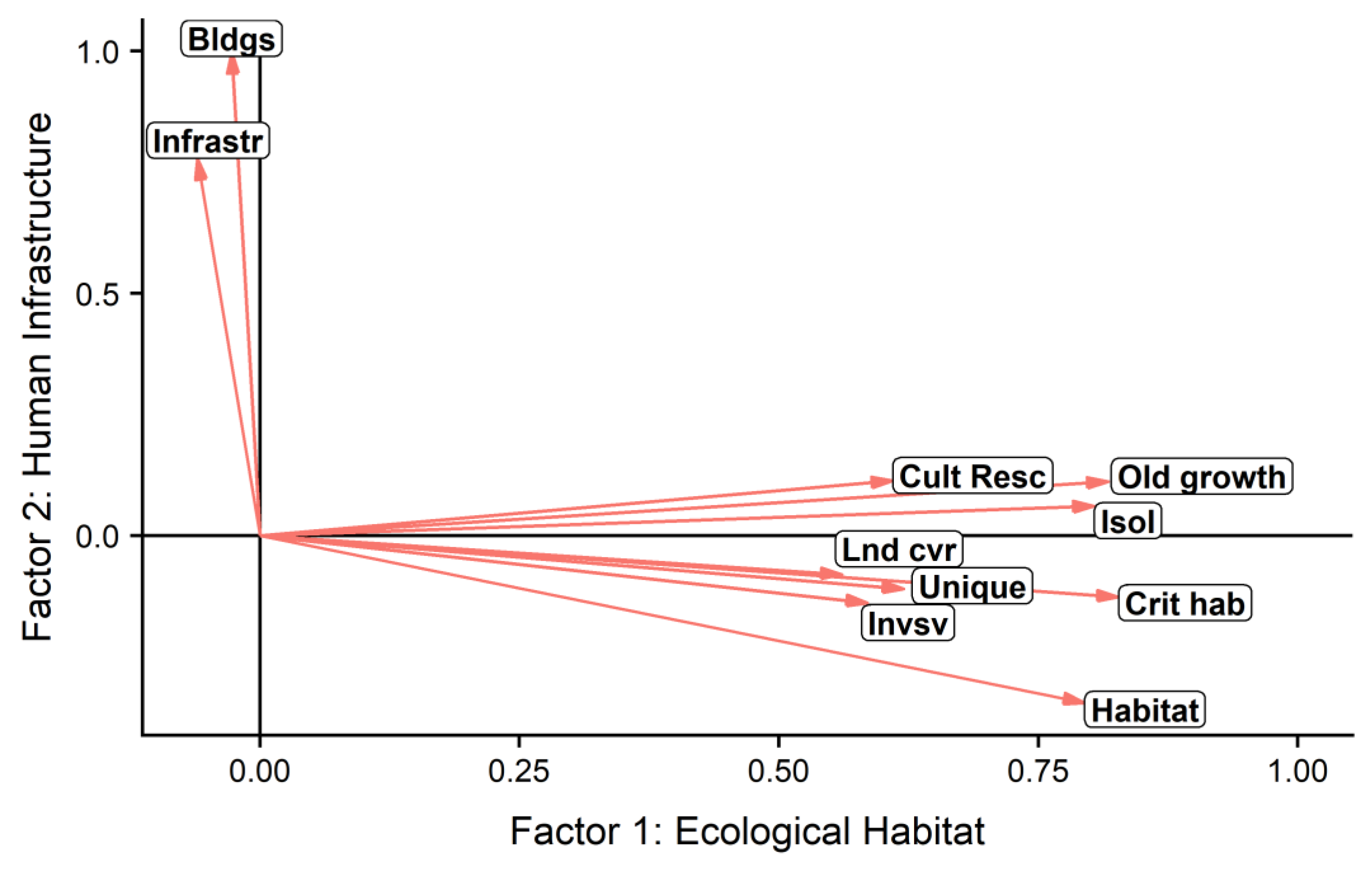
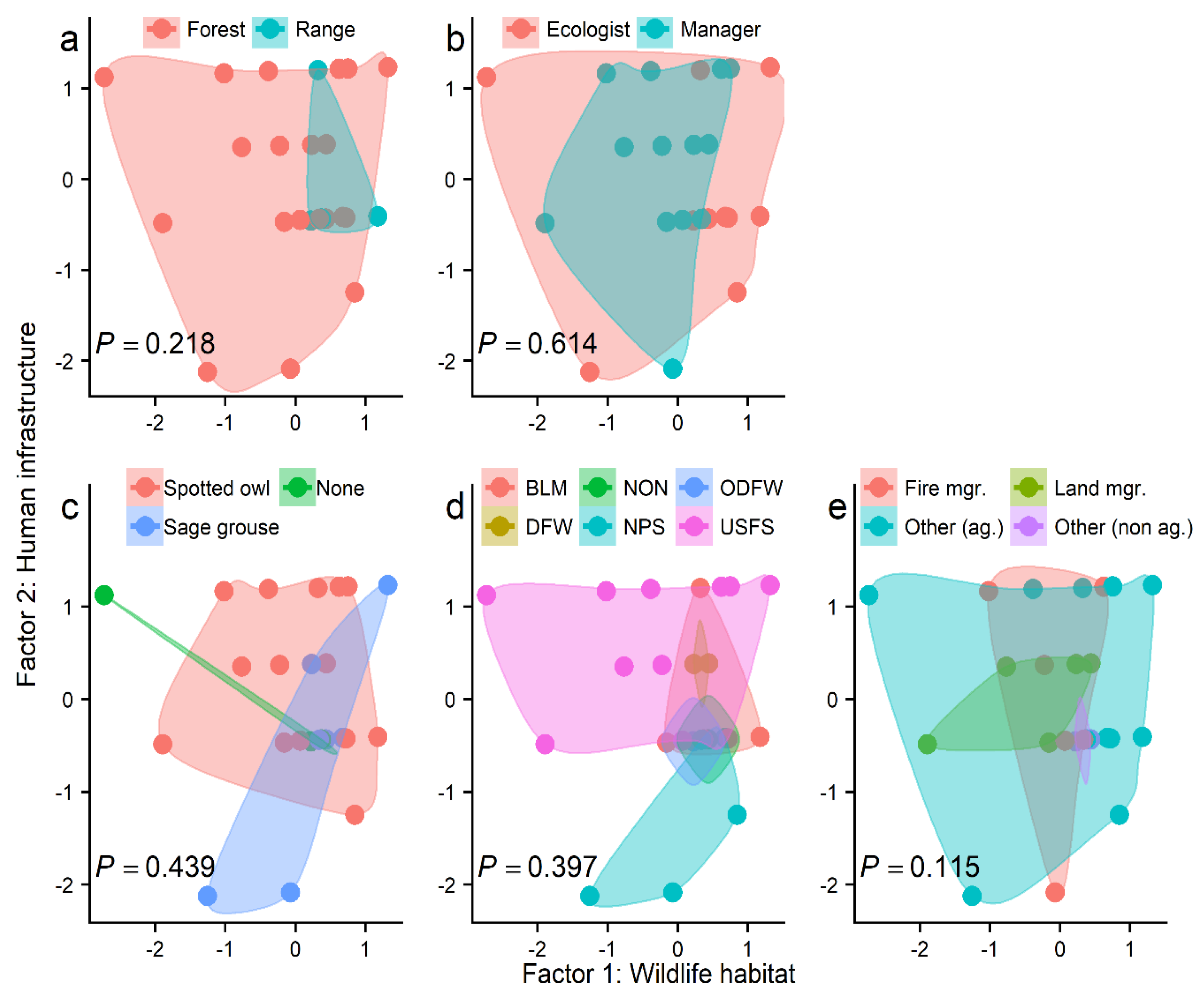
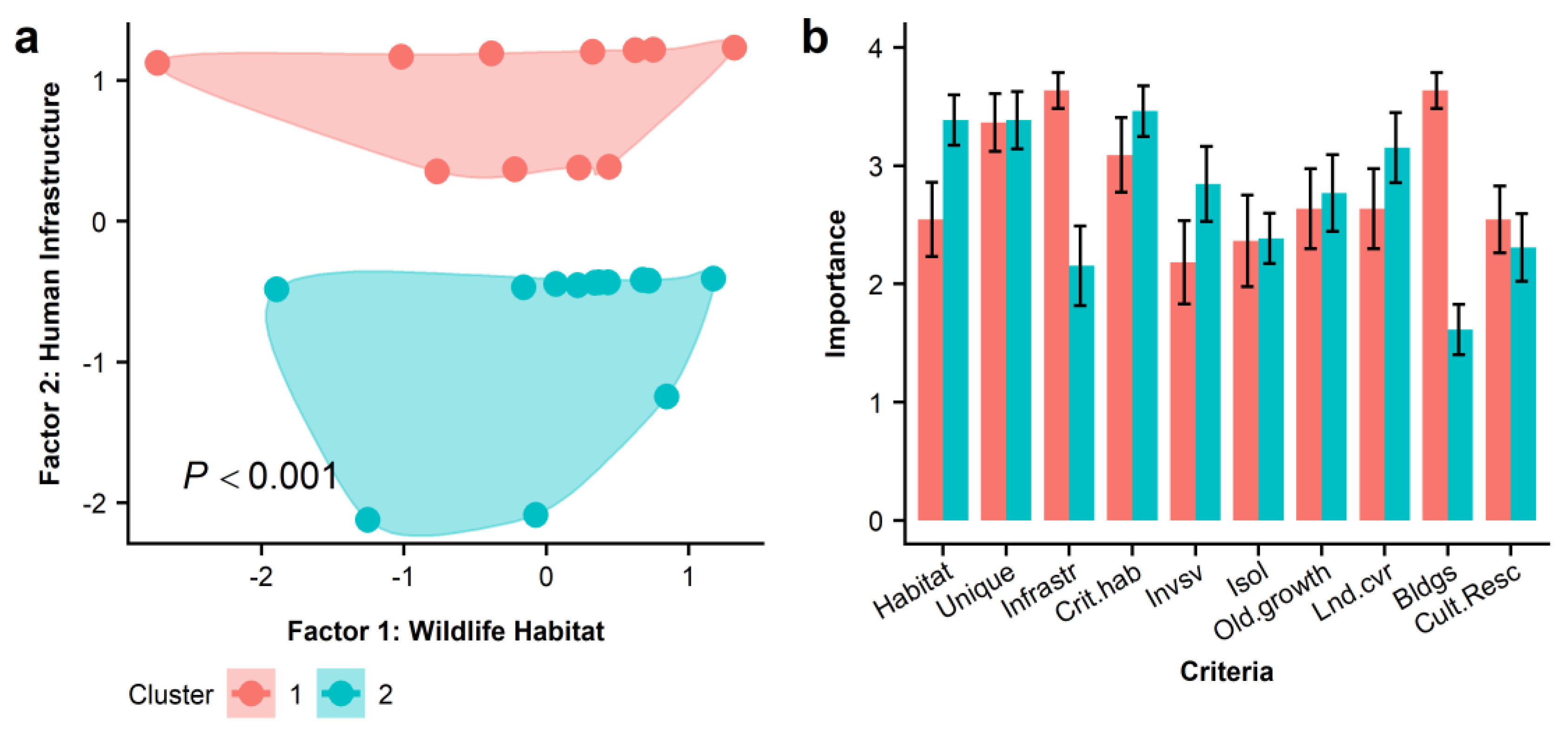
| Variable | df 1 | df 2 | Pillai | F | p |
|---|---|---|---|---|---|
| Ecosystem type | 1 | 22 | 0.548 | 1.577 | 0.218 |
| Occupational category | 1 | 22 | 0.388 | 0.824 | 0.614 |
| Refugia species of concern | 2 | 21 | 0.898 | 1.059 | 0.439 |
| Agency | 5 | 18 | 2.256 | 1.069 | 0.397 |
| Management type | 3 | 20 | 1.609 | 1.503 | 0.115 |
| Cluster | 1 | 22 | 0.864 | 8.28 | <0.001 |
© 2019 by the authors. Licensee MDPI, Basel, Switzerland. This article is an open access article distributed under the terms and conditions of the Creative Commons Attribution (CC BY) license (http://creativecommons.org/licenses/by/4.0/).
Share and Cite
Martinez, A.; Meddens, A.; Kolden, C.; Hudak, A. An Assessment of Fire Refugia Importance Criteria Ranked by Land Managers. Fire 2019, 2, 27. https://doi.org/10.3390/fire2020027
Martinez A, Meddens A, Kolden C, Hudak A. An Assessment of Fire Refugia Importance Criteria Ranked by Land Managers. Fire. 2019; 2(2):27. https://doi.org/10.3390/fire2020027
Chicago/Turabian StyleMartinez, Anthony, Arjan Meddens, Crystal Kolden, and Andrew Hudak. 2019. "An Assessment of Fire Refugia Importance Criteria Ranked by Land Managers" Fire 2, no. 2: 27. https://doi.org/10.3390/fire2020027






